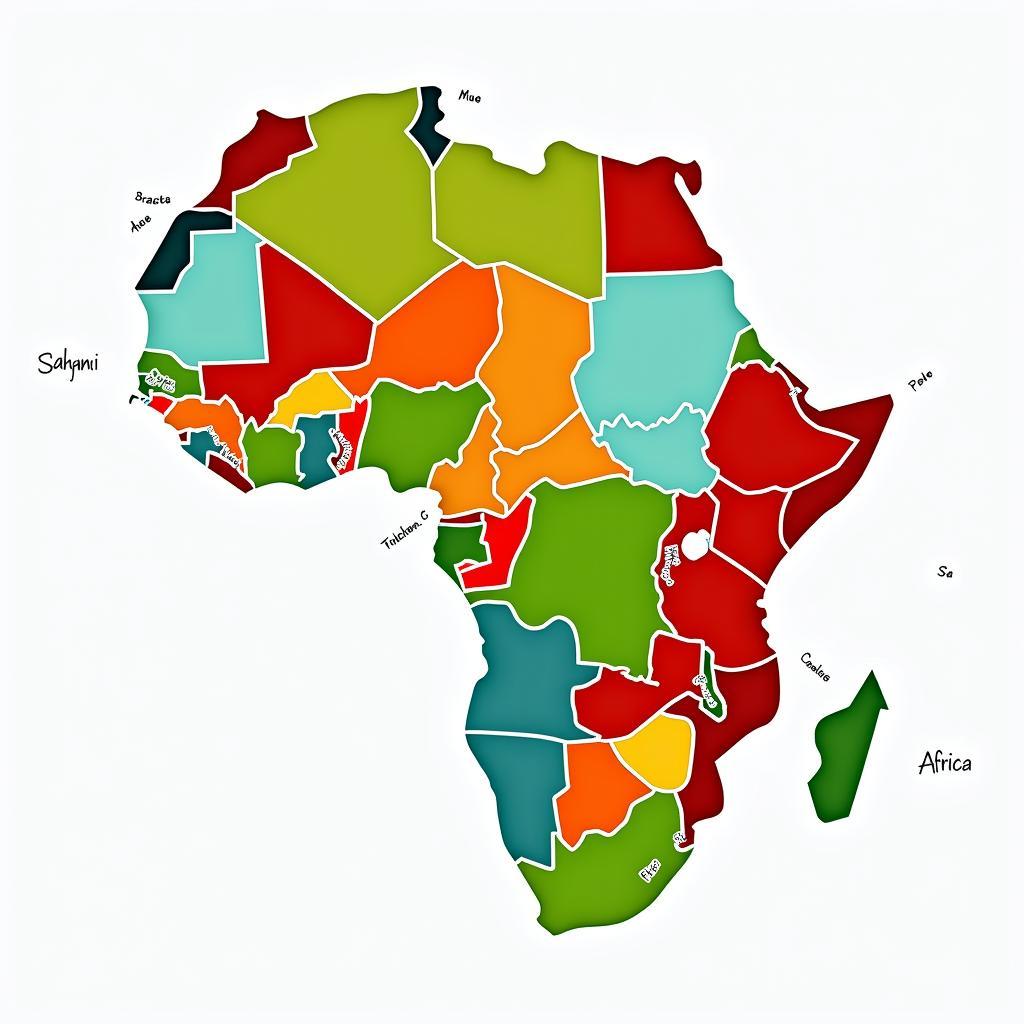Exploring the African Union Map: A Comprehensive Guide
The African Union Map represents a powerful symbol of unity, collaboration, and shared aspirations for the continent’s 55 member states. Beyond its geographical representation, the map embodies the AU’s mission to foster economic development, political stability, and cultural exchange across Africa.
Delving into the History and Significance of the African Union
The African Union, established in 2002, traces its roots back to the Organization of African Unity (OAU) founded in 1963. The OAU played a pivotal role in advocating for the independence of African nations from colonial rule. The formation of the AU marked a significant shift from liberation politics towards a more integrated approach focusing on development and cooperation.
Understanding the African Union Map: Key Features and Regions
The African Union map depicts the geographical boundaries of all 55 member states, showcasing the continent’s vast size and diverse landscapes. The map often features the AU emblem, a green silhouette of Africa within a gold circle, symbolizing hope, prosperity, and the unity of African nations.
Regional Economic Communities: Pillars of Integration
The AU map often highlights the various Regional Economic Communities (RECs) that play a crucial role in promoting regional integration. These RECs, such as the Economic Community of West African States (ECOWAS) and the Southern African Development Community (SADC), focus on harmonizing policies, facilitating trade, and fostering cooperation on issues ranging from infrastructure development to peace and security.
 Map of Africa Showing Regional Economic Communities
Map of Africa Showing Regional Economic Communities
Navigating the African Union: Key Institutions and Decision-Making Processes
The African Union operates through a structured framework of institutions, each with specific mandates and responsibilities:
- The Assembly: Comprising heads of state and government, the Assembly serves as the AU’s supreme decision-making body.
- The Executive Council: Composed of ministers from member states, the Executive Council prepares the Assembly’s agenda and monitors the implementation of its decisions.
- The Peace and Security Council: This crucial body is responsible for promoting peace, security, and stability across the continent.
- The Pan-African Parliament: As the legislative body of the AU, the Pan-African Parliament aims to ensure the full participation of African peoples in the development and economic integration of the continent.
The African Union’s Impact: Achievements and Ongoing Challenges
Since its establishment, the AU has made significant strides in promoting peace, security, and development across Africa:
- Peacekeeping Operations: The AU has deployed peacekeeping missions to address conflicts and promote stability in various parts of the continent.
- Economic Integration: Initiatives like the African Continental Free Trade Area (AfCFTA) aim to boost intra-African trade and foster economic growth.
- Good Governance and Human Rights: The AU actively promotes democratic principles, good governance, and the protection of human rights.
However, the AU continues to grapple with complex challenges, including:
- Poverty and Inequality: Addressing persistent poverty and reducing socioeconomic disparities remain major priorities for the AU.
- Climate Change: The impacts of climate change, such as droughts and floods, pose significant threats to sustainable development in Africa.
- Peace and Security Threats: Terrorism, armed conflicts, and transnational organized crime continue to challenge peace and stability in some regions.
Looking Ahead: The African Union’s Vision for the Future
The African Union has articulated a bold vision for the future, as outlined in its Agenda 2063, which aspires to create “an integrated, prosperous and peaceful Africa, driven by its own citizens and representing a dynamic force in the global arena.” Achieving this ambitious vision will require sustained commitment from member states, effective partnerships, and the active engagement of African citizens from all walks of life.
FAQs about the African Union Map
1. What is the purpose of the African Union map?
The African Union map serves as a visual representation of the organization’s geographical scope, encompassing all 55 member states. It symbolizes the unity and solidarity of African nations while showcasing the continent’s vastness and diversity.
2. How does the African Union map reflect the organization’s goals?
The map often highlights the various Regional Economic Communities (RECs), emphasizing the AU’s commitment to regional integration and cooperation. The presence of the AU emblem on the map reinforces the organization’s aspirations for a prosperous and united Africa.
3. Can the African Union map change over time?
While changes to the African Union map are infrequent, they can occur due to factors such as the formation of new nations or adjustments to existing borders.
Exploring Further: Delve Deeper into African Geopolitics
Conclusion: The African Union Map – A Beacon of Hope and Aspiration
The African Union map stands as a powerful symbol of unity, cooperation, and the shared aspirations of African nations. While challenges remain on the path towards achieving the AU’s ambitious vision, the map serves as a constant reminder of the immense potential and collective strength of the African continent.
Need more information or assistance? Our dedicated customer support team is available 24/7. Contact us via phone at +255768904061, email us at [email protected], or visit us at our office in Mbarali DC Mawindi, Kangaga, Tanzania.
